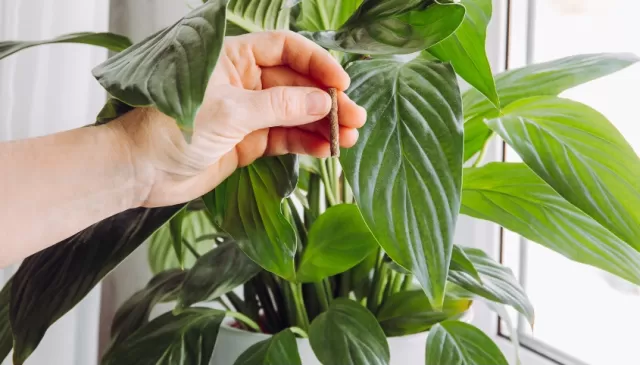Winter Greenery: Garden Activities to Keep Your Thumb Busy. Embracing winter’s shorter days and colder temperatures doesn’t mean gardening enthusiasts have to stow away their green thumbs. Even in regions with frozen soil, avid gardeners can find ways to stay engaged until the arrival of spring. Mike Millerson, founder of Survive Nature, highlights that dedicated gardeners can continue nurturing their love for plants by staying active during the frosty months.
“While the soil might be frozen, true gardening enthusiasts find ways to keep their green thumbs active and continue their connection with plants,” says Millerson. Winter offers unique opportunities for garden-related activities that can be as fulfilling as any other season when approached with creativity and purpose.
Whether it’s winter sowing, exploring gardening-adjacent hobbies like composting or vermiculture, or tending to indoor houseplants, there are numerous ways to stay connected with the gardening passion during the colder months. Additionally, focusing on wildlife care, houseplant maintenance, and even starting seeds indoors are productive winter activities that contribute to the overall joy of gardening.
Winter doesn’t have to be a dormant period for gardening enthusiasts; rather, it can be a season of exploration, learning, and preparation for the vibrant days of spring ahead.
Embrace Nature’s Rhythm: Kickstart Growth with Winter Sowing

Embark on the journey of winter sowing, a gardening technique that aligns with the natural cycles of the season.
As explained by Millerson, this method involves starting seeds outdoors within covered containers, often repurposing items like old milk gallon jugs for a cost-effective DIY approach. Acting as mini-greenhouses, these containers expose seeds to the fluctuating weather conditions, fostering robust and resilient growth compared to indoor sowing.
Winter sowing is particularly effective for hardy plants and those that benefit from a period of cold stratification.
By engaging with this method, you not only synchronize your gardening efforts with the winter environment but also set the stage for a flourishing and healthy garden in the seasons to come. Embrace the simplicity and efficacy of winter sowing as you cultivate a connection between your garden and the natural rhythm of the colder months.
Nurture Your Green Passion: Winter Hobbies for Gardening Enthusiasts
Embrace the winter months as an opportunity to cultivate your love for gardening through complementary hobbies that not only keep you engaged but also contribute to the prosperity of your spring garden.
According to Millerson, exploring activities like DIY composting or vermiculture (indoor worm composting) serves as an enriching way to give back to your garden.
These gardening-adjacent hobbies not only provide a fulfilling way to remain active during the colder season but also set the stage for a bountiful and healthy garden when spring arrives.
Dive into the world of composting and vermiculture, discovering the intricate and sustainable ways to nurture your soil. This winter, let your green passion extend beyond the traditional gardening routine, allowing you to explore new avenues that enhance both your gardening skills and the well-being of your beloved plants.
Cultivate Early Blooms: Indoor Seed Sowing for Spring Splendor

Make the most of fall and winter by sowing seeds indoors, laying the groundwork for a vibrant burst of color in your garden once the warmer weather arrives.
According to Bishop, this season presents the prime opportunity to sow a variety of hardy spring annuals, including sweet peas, larkspur, Queen Anne’s lace, snapdragons, cornflower, and poppy.
By starting these seeds indoors, you provide them with the optimal conditions for germination and early growth, ensuring a head start for a stunning display of blooms come spring.
Engage in the rewarding process of nurturing these seeds during the colder months, and watch as your efforts blossom into a tapestry of colors that herald the arrival of spring in your garden. Indoor seed sowing becomes a source of anticipation and joy, promising a garden adorned with the beauty of nature’s renewal.
Winter Hospitality for Nature: Supporting Wildlife in Cold Months
Despite the chill in the air, local wildlife persists, and you can play a crucial role in supporting their well-being during the winter season.
As suggested by Gene Caballero, co-founder of GreenPal, one impactful way to contribute is by setting up bird feeders, a delightful winter activity that provides essential nourishment for our feathered friends. Additionally, consider establishing water sources, recognizing that even in colder temperatures, access to water is vital for wildlife.
This thoughtful act not only fosters a sense of community with the natural world around you but also carries long-term benefits for your garden.
The presence of local wildlife can aid in pest control and contribute to essential pollination processes, laying the foundation for a thriving and balanced ecosystem. Embrace the winter season as an opportunity to extend your care beyond the garden gates, creating a haven for wildlife and establishing a harmonious relationship between your outdoor space and the creatures that call it home.
Winter TLC for Indoor Greenery: Nurturing Houseplants with Care

As the winter season sets in, don’t forget to extend your gardening love indoors, especially to your cherished houseplants.
According to Palacio, winter is a critical period for the care of indoor plants, demanding careful attention to their unique needs. With indoor heating systems potentially drying out the soil faster, it’s essential to strike a balance between providing adequate moisture and avoiding overwatering.
Ensure your houseplants receive sufficient light and humidity to thrive in the indoor environment.
Consider adjusting their placement to optimize exposure to natural light, and if needed, introduce humidifiers to counteract the effects of dry indoor air. By focusing on the well-being of your indoor green companions, you not only maintain a lively and refreshing atmosphere within your home but also set the stage for their continued growth and vitality throughout the winter months.
*The information is for reference only.